Trending News
17 October, 2024
10.1°C New York

Government websites aren’t known for cutting-edge tech. GovWell co-founder and CTO Ben Cohen discovered this while trying to help his dad, a contractor, apply for building permits. Cohen worked as a full stack engineer at Uber during the day and faxed documents for building permits at night. The difference in tech was stark. Years later, this experience inspired him to launch GovWell.
New York-based GovWell is a workflow system for small and medium-sized governments that helps automate and streamline tasks ranging from building permits and code to zoning to fire safety inspections. GovWell co-founder and CEO Troy LeCaire told TechCrunch that the platform is helping local governments complete tasks in a fraction of the time it used to take.
LeCaire added that every government runs these processes a little differently, so GovWell’s platform was designed in a way that allows governments to customize it to their requirements without having to pay for a bespoke platform.
“It’s a single product that can be configured by no-code tools to make the software adapt perfectly to what it needs to do,” LeCaire said. “A good example is something like Salesforce — it can be configured to adapt to different businesses, but under the hood, it is the same process.”
LeCaire and Cohen were matched through a founder speed-dating activity at Fractal Software, a New York-based startup incubator. They realized that they both had experience with government, Cohen’s with his dad and LeCaire’s with political campaigns and a college degree in the subject. They first set out to build a software that automated building permits but quickly realized the problem was larger than that.
“We called hundreds of municipalities and asked them what [software] they were using and if they liked it, and we found that people didn’t like it despite paying thousands if not millions for it,” LeCaire said. “We realized that government needed a more general workflow solution.”
GovWell landed five government customers before the founders had written a line of code. Now, since its launch in April 2023, GovWell works with more than a dozen local governments ranging from parks departments to health departments across seven states.
The company raised a $4.5 million seed round led by Work-Bench with participation from existing investor Bienville Capital. LeCaire said that the company didn’t need to raise money and is on a path toward positive cash flow. They decided to raise because there was inbound investor interest and the company had the ability to set its own terms to accelerate growth. GovWell will use the money to triple the team in the next 18 months and invest in product development.
GovWell isn’t the only company looking to bring government software into the 21st century. A handful of startups, like GovDash, Hazel and Odo, are also looking to bring better software to the government contract space. There are some that focus on government workflow too. OpenGov is one. It’s a digital cloud software provider for governments that raised $178 million in venture funding before being acquired by Cox Enterprises earlier this year. GovPilot is another.
LeCaire said even with other software players, there isn’t competition in this sector like there is in AI or B2B SaaS.
“The scale of the problem is enormous,” LeCaire said. “Government expenditures is 36% of GDP. Local governments spend $1.8 trillion administering services. It’s a huge sector of the economy. Their adoption of AI, it is a massive market that touches everyone’s lives, the education system, and economic and community development.”
LeCaire said that while people don’t think of local governments as being big adopters of new tech — which isn’t entirely wrong — this area is different because these organizations are already spending quite a bit of money on it. GovWell hopes it can become that go-to provider.
“Our goal is to become the number one workflow automation for smaller and medium-sized local governments over the next 18 months,” LeCaire said. “What we are doing here, it is a unifying idea that, hey, government should work better. We all pay taxes. We all want our government to be efficient and effective to use.”

Government websites aren’t known for cutting-edge tech. GovWell co-founder and CTO Ben Cohen discovered this while trying to help his dad, a contractor, apply for building permits. Cohen worked as a full stack engineer at Uber during the day and faxed documents for building permits at night. The difference in tech was stark. Years later, this experience inspired him to launch GovWell.
New York-based GovWell is a workflow system for small and medium-sized governments that helps automate and streamline tasks ranging from building permits and code to zoning to fire safety inspections. GovWell co-founder and CEO Troy LeCaire told TechCrunch that the platform is helping local governments complete tasks in a fraction of the time it used to take.
LeCaire added that every government runs these processes a little differently, so GovWell’s platform was designed in a way that allows governments to customize it to their requirements without having to pay for a bespoke platform.
“It’s a single product that can be configured by no-code tools to make the software adapt perfectly to what it needs to do,” LeCaire said. “A good example is something like Salesforce – it can be configured to adapt to different businesses, but under the hood, it is the same process.”
LeCaire and Cohen were matched through a founder speed dating activity at Fractal Software, a New York-based startup incubator. They realized that they both had experience with government, Cohen’s with his dad, and LeCaire’s with political campaigns and a college degree in the subject. They first set out to build a software that automated building permits but quickly realized the problem was larger than that.
“We called hundreds of municipalities and asked them what [software] they were using and if they liked it, and we found that people didn’t like it despite paying thousands if not millions for it,” LeCaire said. “We realized that government needed a more general workflow solution.”
GovWell landed five government customers before the founders had written a line of code. Now, since its launch in April 2023, GovWell works with more than a dozen local governments ranging from parks departments to Health Departments across seven states.
GovWell raised a $4.5 million seed round led by Work-Bench with participation from existing investor Bienville Capital. LeCaire said that the company didn’t need to raise money, and is on a path toward positive cash flow. They decided to raise because there was inbound investor interest and the company had the ability to set its own terms to accelerate growth. GovWell will use the money to triple the team in the next 18 months and invest in product development.
GovWell isn’t the only company looking to bring government software into the 21st century. A handful of startups, like GovDash, Hazel and Odo are also looking to bring better software to the government contract space. There are some that focus on government workflow too. OpenGov is one. It’s a digital cloud software provider for governments that raised $178 million in venture funding before being acquired by Cox Enterprises earlier this year. GovPilot is another.
LeCaire said even with other software players there isn’t competition in this sector like there is in AI or B2B SaaS.
“The scale of the problem is enormous,” LeCaire said. “Government expenditures is 36% of GDP. Local governments spend $1.8 trillion administering services. It’s a huge sector of the economy. Their adoption of AI, it is a massive market that touches everyone’s lives, the education system, and economic and community development.”
LeCaire said that while people don’t think of local governments as being big adopters of new tech – which isn’t entirely wrong – this area is different because these organizations are already spending quite a bit of money on it. GovWell hopes it can become that go-to provider.
“Our goal is to become the number one workflow automation for smaller and medium-sized local governments over the next 18 months,” LeCaire said. “What we are doing here, it is a unifying idea that, hey, government should work better. We all pay taxes. We all want our government to be efficient and effective to use.”
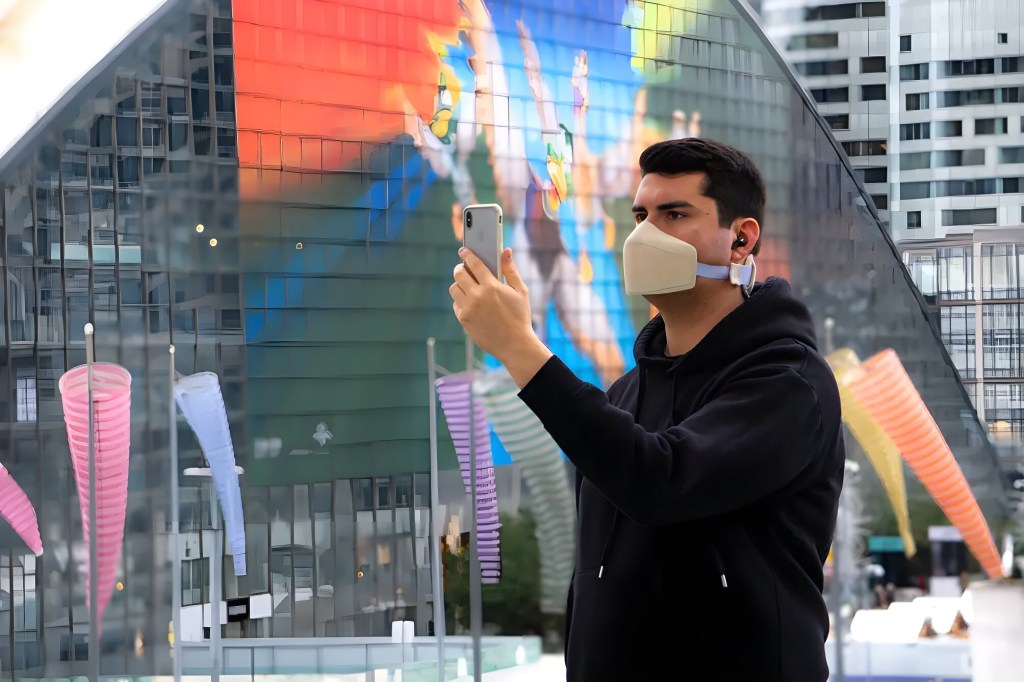
CES has always been the place for weird, out-there gadgets to make their debuts, and this year’s show is no exception.
Skyted, a Toulouse, France-based startup founded by former Airbus VP Stéphane Hersen and acoustical engineer Frank Simon, is bringing what look like a pair of human muzzles to CES 2024. Called the “Mobility Privacy Mask” and “Hybrid Silent Mask,” the face-worn accoutrements are designed to “absorb voice frequencies” in noisy environments like plains, trains and rideshares, Hersen says.
“Skyted’s solution is ideal for commuters, business executives and travelers anywhere,” Hersen is quoted as saying in a press release. “No matter how busy or public the location is, they can now speak in silence and with the assurance that no one nearby can hear their conversation.”
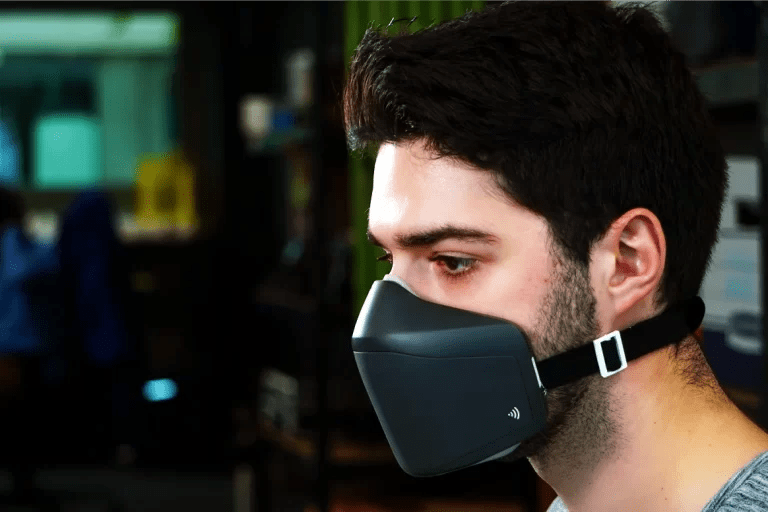
Now, there’s no getting around the fact that the strap-secured masks aren’t exactly indiscreet or stylish… unless the Dyson Zone tickled your fancy. And at around half a pound (220 grams), they’re not exactly lightweight, either. But Hersen makes the case that the tradeoffs are worth it for the privacy the masks (allegedly) afford.
Skyted’s masks are built from sound-dampening material that Simon developed while at ONERA, the French aerospace lab — originally for jet engines. They sync (via wire or wirelessly) to a smartphone app that offers a pass-through toggle to pipe speech through the phone’s speaker — minimizing the need to remove the mask. The app also calculates the wearer’s “voice level” and shows insights into their “perceptibility” and “intelligibility,” sort of like a Fitbit for speech.
The masks muffle 80% of a wearer’s voice, Skyted claims, while enhancing the volume in voice and video calls by isolating outside noise. And they’ve been tested with “leading” (albeit unnamed) transportation providers, with backing from both ONERA and the European Space Agency.
To this reporter, though, the masks look like a shot in the dark. Skyted’s marketing suggests as much.
On its website, Skyted advertises… unusual in-app features like a “voice awareness” mode that lets parents quiet their noisy mask-donning kids while they’re playing video games. (It’s not totally clear how this works; perhaps active noise cancellation?) Skyted, in fact, pitches the masks as a more “immersive” way to play games and even has a section of its website dedicated to defense and military applications. Skyted claims to have worked with the French military and the Defence Innovation Agency, France’s military R&D arm, to develop a custom mask exclusively for submariners and special ops.

Skyted appears to be testing a medical mask of some sort too — which, taken with all the other sectors it’s going after, suggests a lack of focus. The scattershot go-to-market — coupled with the eye-watering $299 starting price and low-tech competition — doesn’t bode well for Skyted’s upcoming Kickstarter.
Then again, Skyted managed to secure ~$1 million in seed funding last year, according to Crunchbase data. Perhaps there’s a bigger market for face-mounted, sound-absorbing wearables than I thought.

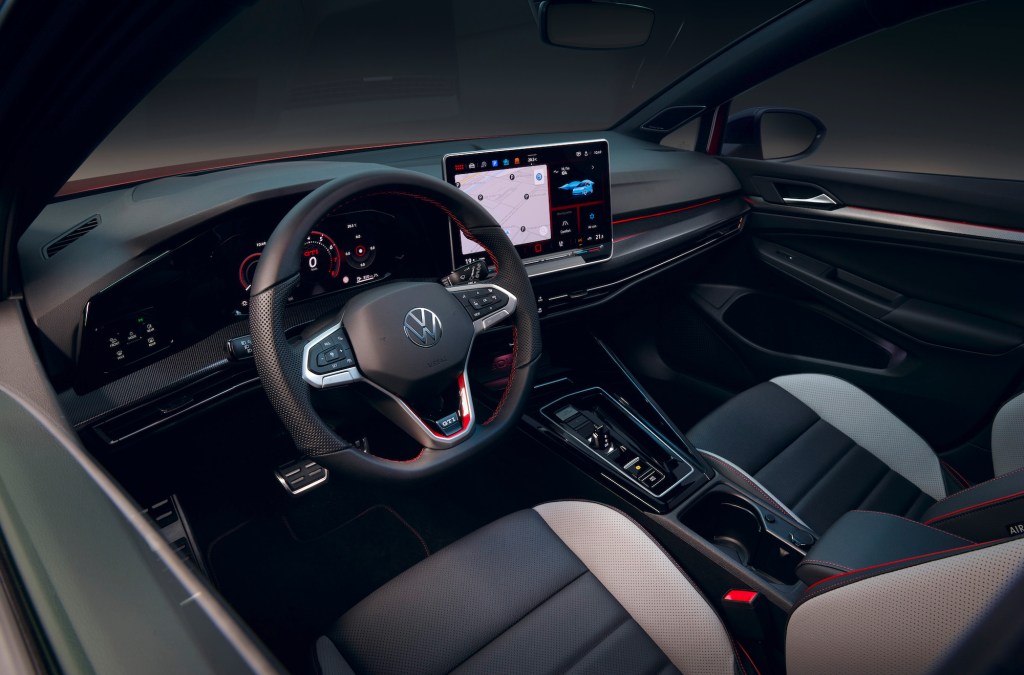
Volkswagen is getting into the ChatGPT game. The German automaker announced Monday at CES 2024 in Las Vegas plans to add an AI-powered chatbot into all Volkswagen models equipped with its IDA voice assistant.
Why? For drivers who want an AI-based chatbot to read researched content out loud to them, of course. TechCrunch was on hand at CES 2024 to try out the ChatGPT feature and found that it could still be tricked in some cases.
The AI-based chatbot, which is based on software company Cerence’s Chat Pro product and a large language model from OpenAI, will roll out in the second quarter, starting with Europe. Models getting the AI chatbot include Volkswagen’s line of EVs such as the ID.7, ID.4, ID.5 and ID.3, as well as its new Tiguan, Passat and Golf vehicles.
For now, Volkswagen models in the United States won’t have the feature. Volkswagen said it was “being considered,” and going through some internal approvals.
ChatGPT is a text-generating AI chatbot developed by OpenAI, a company that has launched into the stratosphere of buzzy tech startups over the past year. Volkswagen is certainly the largest automaker to date to make plans to integrate ChatGPT into its vehicles. But it’s not the first. Mercedes-Benz added the conversational AI-bot to its MBUX infotainment system last June.
Like Mercedes, Volkswagen has integrated ChatGPT into the back end of its IDA voice assistant, which drivers can use to control the infotainment, navigation and air conditioning, or to answer general knowledge questions.
ChatGPT will push beyond those basic capabilities, Volkswagen says, offering up examples like “Enriching conversations, clearing up questions, interacting in intuitive language, receiving vehicle-specific information, and much more — purely hands-free.” Volkswagen is also using a more narrow large language model, or LLM, provided by Cerence. This LLM, called CaLLM, can address about 10,000 questions and answers that might be specific to the vehicle, brand and operations.
Once the feature is launched, drivers will interact with the IDA voice assistant as they have before. The voice assistant is activated with the “Hello IDA” wake word or by pressing the button on the steering wheel. If the voice assistant can’t handle the request — something beyond, Hey IDA what’s the weather forecast? — it will be forwarded anonymously to the AI chatbot. The response will come through the IDA voice assistant, which signals where the information is coming from.
Cerence has helped Volkswagen place limits on what the chatbot will answer. For instance, questions about profanity and sex will not be answered, nor will any “sensitive” topic, including the Israel-Hamas War. Although, during a test at CES 2024, I phrased the question in such a way that it did provide a generic answer. Cerence has also placed limits on other brands. For instance, when asked “tell me the 10 reasons I should buy a Toyota,” the assistant answered “Sorry, I can’t answer that question.” If the question is more general, such as which automaker sold the most EVs in 2022? The voice assistant, tapping into ChatGPT, will answer the question, which is Tesla.
ChatGPT may be just the beginning for Volkswagen. Cerence CEO Stefan Ortmanns said the two companies will “explore collaboration to design a new, large language model (LLM)-based user experience as the basis of Volkswagen’s next-generation in-car assistant.”
It should be noted that this rollout is separate from what Cariad, the software arm of parent company VW Group, is working on. Cariad was formed in 2020 to solve VW’s struggles with software. However, that unit has had its own challenges in the past year, including a delayed software launch and an executive shakeup.

This post was originally published at 8 a.m. PT and has since been updated to include hands-on impressions from CES 2024.

Aniai, a startup that has built a burger-grilling robot, Alpha Grill, said today it has raised $12 million, bringing its total raise to $15 million. The money will go toward launching its first manufacturing facility, Factory One, in South Korea. The firm will also be deploying a cloud-based AI software platform for the robot called Alpha Cloud.
Robot adoption in the restaurant business is becoming popular as it can help restaurants address their high pain points like labor shortages, and rising wage issues. Robotics enables restaurants to save 30% to 70% of labor costs, and restaurants could replace more than 80% of restaurant positions with robots, according to a research report.
“Burger chains hire six to eight kitchen staff per shift to grill burgers,” Aniai CEO Gunpil Hwang said. “Alpha Grill enables restaurants to engage only one staff member to grill burgers.”
The New York-headquartered startup says it will launch Factory One this year to meet the growing market demand for Alpha Grill, with around 500 pre-orders for delivery starting in the first quarter of 2024. Its manufacturing facility will be able to produce more than 1,000 robots annually. The company’s double-sided Alpha Grill, launched in 2022, can cook 200 patties per hour, or eight patties simultaneously (after human staff places them on a grill).
The cloud-based AI software and real-time vision sensor will enable Alpha Grill to perceive the environment, identify the color of patties on a grill and monitor the patties’ temperature, shape and quality. If the user’s patty does not meet its cooking recipes, specifications and requirements, Alpha Grill promptly notifies the cooking staff to ensure quality control.
The startup is currently developing its second product, Alpha Kitchen, Hwang told TechCrunch. With an expected 2025 launch, Alpha Kitchen will be able to automate the entire burger-making process, from cooking patties and toasting buns to dispensing vegetables and other ingredients.
Aniai currently serves seven customers, including fast-food burger chains in South Korea, CJ Freshway, BAS Burger and DownTowner. It has also been testing Alpha Grill with burger chains in the U.S. since last year. The outfit says it will also use the latest capital speed up its expansions in the U.S. and South Korea.
Aniai is part of a growing kitchen automation industry. Other companies in this space include Miso Robotics, which is behind Flippy, a burger-flipping robot; Botinkit, a cooking robot maker in China; and Chef Robotics in San Francisco.
InterVest led the latest funding along with new investors SV Investment, UK’s Ignite Innovation and a previous backer, Capstone Partners.
Founded in 2020, the startup had 30 employees as of December 2023.
https://techcrunch.com/2021/11/02/flippy-the-hamburger-cooking-robogets-a-more-capable-successor/

XPeng, Tesla’s challenger from China, has its eye on the international market and plans to use its smart driving software as a selling point.
The Guangzhou-based electric vehicle upstart said at an event this week that it will start developing its highway-specific Navigation Guided Pilot (NGP) for global users in 2024, while the international version of its next-generation, all-purpose XNGP feature will commence development in 2025.
“We look forward to enabling overseas users to access XPeng’s autonomous driving that is already available in China,” Xiaopeng He, the firm’s founder and CEO, said at the event.
NGP and its souped-up version XNGP are the equivalent of Tesla’s semi-autonomous driving system Full-Self Driving (FSD). Specifically, XNGP is the catch-all marketing moniker for all of XPeng’s advanced driver assistance system (ADAS) features, including highway and urban driving as well as self-parking.
While initially using high-definition maps to navigate, XNGP recently removed such pre-computed information so Xpeng vehicles can drive anywhere, relying on sensors like lidars and radars that detect real-time road conditions.
Founded in 2014, XPeng first ventured out of China in late 2021, starting with Europe. It has since shipped its plugged-in SUVs and sports sedans to Norway, Denmark, the Netherlands and Sweden, with Germany, France and the U.K. on the roadmap for 2024. Last year, XPeng commenced sales in Israel, joining a wave of Chinese EV firms flocking to the Middle East.
It remains to be seen how XPeng’s map-free driver-assist system performs in these unfamiliar territories.
XPeng starts removing HD maps from Tesla FSD-like feature in China
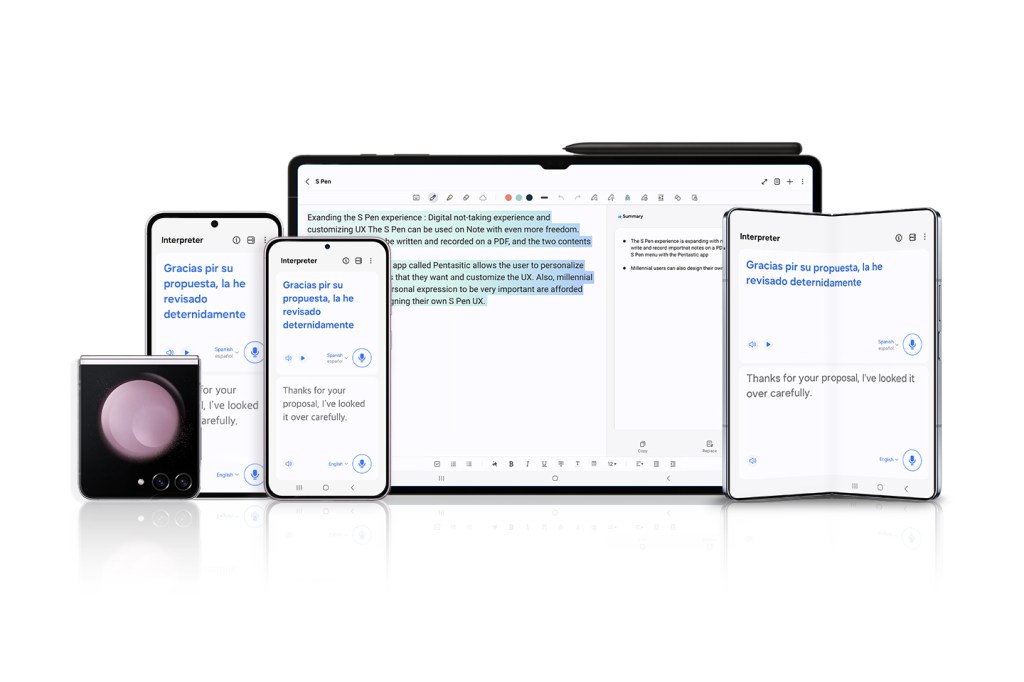
Samsung is bringing its Galaxy AI features to more devices through a new One UL 6.1 update coming in late March, the company announced today. The features are coming to the Galaxy S23 series, S23 FE, Z Fold5 and Z Flip5, as well as Tab S9 Ultra, Tab S9+ and Tab S9.
The AI features were first introduced for the Galaxy S24 series, but will soon be available to even more Samsung users. As nearly every tech company is introducing and expanding their AI-powered features, it makes sense for Samsung to make its features more widely accessible.
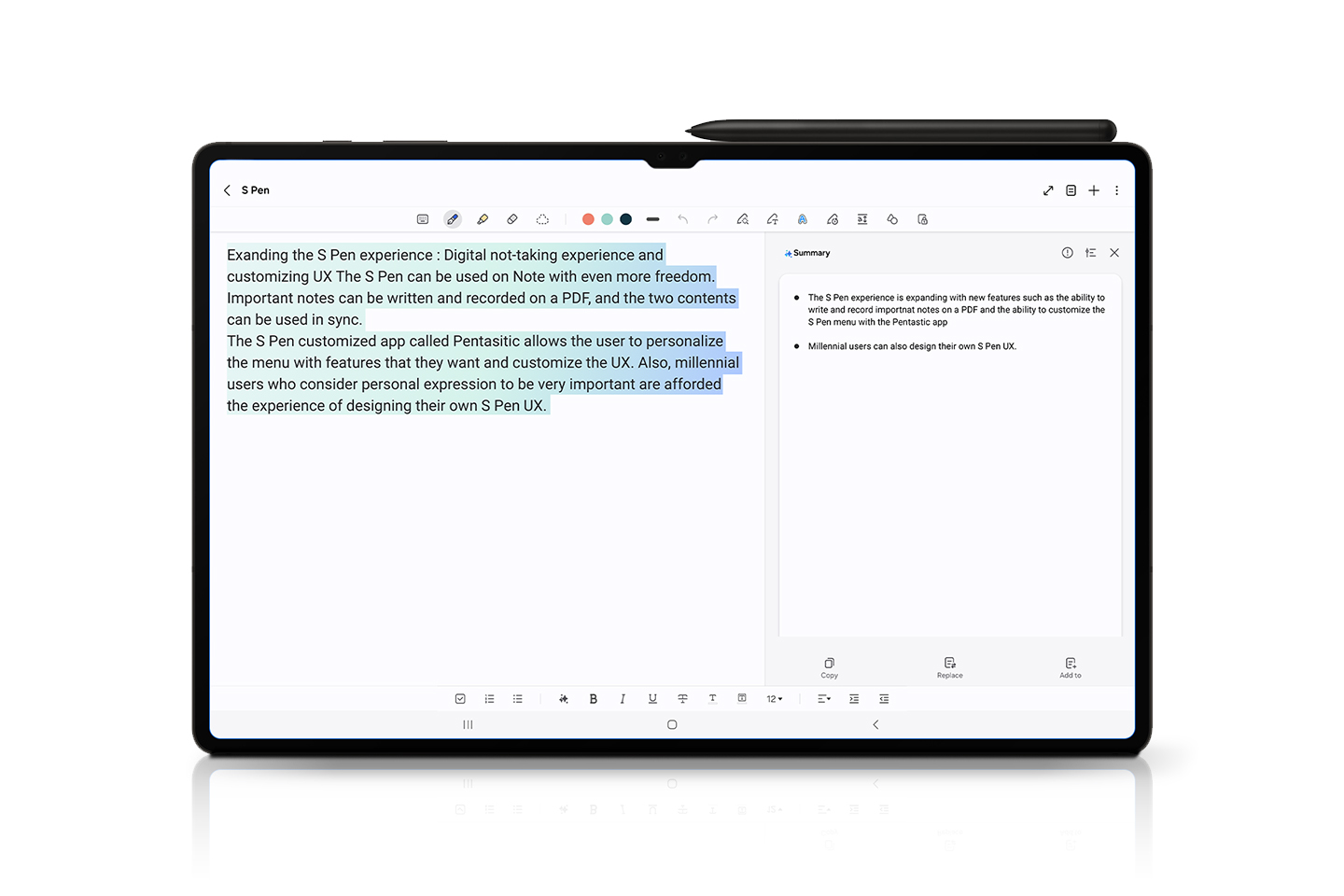
With this upcoming update, users will get access to Google’s “Circle to Search” feature, which lets users search from anywhere on their phone using gestures like circling, highlighting, scribbling or tapping. Another feature called Live Translate will provide voice and text translations for phone calls. Plus, users will get access to an “Interpreter” feature that generates text translations for live conversations.
Google introduces ‘Circle to Search,’ a new way to search from anywhere on Android using gestures
Users will also get access to “Chat Assist,” which gives you the ability to adjust your tone in messages and translate texts in 13 languages via Samsung Keyboard.
In addition, a new “Note Assist” feature will let users generate summaries and translate notes, while a “Browsing Assist” feature will provide them with quick summaries of news articles.
As for new editing capabilities, users will be able to use “Generative” Edit” to resize, reposition and realign objects in photos. Plus, the “Edit Suggestion” feature will help you quickly polish photos, while the “Instant Slow-Mo” feature will generate additional frames for slow-motion videos to better capture moments.

In May 2019, Ultrahaptics and Leap Motion became Ultraleap (not to be confused with Magic Leap, which operates in the same space). It’s a name change representing the marriage of two different, yet related, tech startups. Ultrahaptics naturally got top billing, as it was the one doing the acquiring – paying around $30 million for the hand-tracking firm.
After failing to meet up at CES (thanks, COVID), I met up with co-founder and CEO Tom Carter at a coffee shop away from the maddening crowds of MWC 2024 to discuss life after acquisition. Carter became the CTO of the new company after serving the same role at Ultrahaptics for six years.
At the acquisition’s center is a push to merge both companies’ existing technologies. The emerging world of extended reality (XR) is the first target. “I think it’s a long-term vision for XR,” Carter said of the deal. “It’s not really a vertical. It’s a lot of different things, and a long-term vision is interacting with 3D content.”
Leap Motion is the older of the two. Founded in 2010, the Bay Area–based startup was best known for the Leap Motion Controller, a small peripheral that sports a pair of IR cameras and infrared LEDs, which are used for hand tracking. The company settled on VR as a primary use case not long after Oculus shipped its first headset to Kickstarter backers.
The initial product wasn’t particularly elegant, as it was designed to be mounted on the front of a VR visor. Ultimately, Leap Motion’s initial hype didn’t translate into lasting success, due in part to many companies’ decision to go in-house for hand-tracking solutions.
Founded by a pair of University of Bristol students three years after Leap Motion, Ultrahaptics harnesses ultrasound waves to create tactile feedback. The technology is being focused on two initial verticals. The first is automotive, using a console-based speaker that fires upward to deliver a sense of tactility to in-car heads-up displays. This will be accomplished through direct partnerships with carmakers.
The second is XR. This, naturally, is where Leap Motion’s technology comes into play. The joint company is working to integrate the two into a device that gives you tactile feedback as it tracks your hands. The resulting product would be one that would bring a sense of weight to the virtual landscape. The lack of sensory feedback has long been an issue in the space.
Certainly Ultrahaptics isn’t the first attempt to address this. A common solution involves wearing a pair of gloves with more traditional haptic motors — like the kind found on phones — built in. Carter doesn’t believe that adding more wearable tech into the mix is the solution most XR users are looking for. Instead, the system would take the form of a small “puck” that sits on the floor, sending waves up to the hands.
This isn’t the only configuration the technology can work in. Much like the earlier Leap Motion product, it would be possible to mount a device to the front of the visor, but directionality is important. From below, the ultrasound waves create a sense of resistance. If they’re coming off the user, however, the force moves in the opposite direction.
Last month at CES, the company showed off Sensation Designer, an important step toward commercializing the joint technology. It’s a software package designed to give developers the ability to bring haptic experience to XR. A demo experience at the event involved a virtual bonsai tree. The Leap Motion tech determines your hands’ orientation in space, while haptics provide tactile feedback when you come into contact with the virtual object.
In its final form, it could provide an added sense of reality to the virtual experience, from gaming to enterprise applications.


In the summer after his freshman year at Worcester Polytechnic Institute, an engineering school in Worcester, Massachusetts, Cyvl.ai co-founder and CEO Daniel Pelaez needed a job. He went home and worked at his local public works department, where he noted that there was very little software for tracking road repairs. He was told to go out, drive around, find issues and fix them.
“I was filling in potholes, fixing signs and cutting down trees. And during my time there, I quickly saw firsthand they had no data on anything,” Pelaez told TechCrunch. He saw an opportunity that would eventually become Cyvl.ai, a firm that helps municipalities and civil engineering firms bring a digital layer to tracking the conditions of transportation infrastructure.
Today the Boston-area startup announced a $6 million investment.
“Our core vision and why we started the company in the first place is to help the entire world build and maintain better transportation infrastructure,” he said. This covers roads, highways, sidewalks, airports and rail. Anyone from Boston certainly knows this is an area where the city could use a lot of help.
They are using sensors that can create a digital twin of the infrastructure piece such as a road, and then showing where there are weaknesses and predicting when there is likely to be a repair event. They do this using lidar, cameras and sensors, and combine this with their own data analytics and geospatial AI pipeline, he said.
“What we’re providing our end users, whether it’s civil engineering firms or governments, is better data on their transportation systems than they could ever have captured before and just helping them really be data driven when it comes to building and maintaining these very large-scale transportation systems,” Pelaez said.
He admits that selling to governments is not for the faint of heart, but the startup has figured out a way around the issues involved in dealing with municipalities. They learned that external civil engineering firms are often responsible for doing road surveys (or other transportation reviews) on behalf of the city or town, and they have begun partnering with them in a channel kind of relationship.
“Oftentimes, we’re really just relying on them to communicate to the government all the benefits of this technology, showing them that they were collecting it manually before, and we’re going to use this new technology to give them better data better and better visuals at the same cost, if not cheaper than what was already proposed in the contract,” he said.
The approach seems to be working with close to 200 cities and towns using their software to this point in just 2.5 years of operation, generating close to $2 million in annual recurring revenue (ARR). So the partnerships with these firms appear to be paying dividends. He says so far the chief competition has not been other companies doing something similar, but resistance to changing from manual processes to digital.
The company has an office in Somerville, Massachusetts, just outside of Boston, and currently has 11 employees, but they are hiring and he hopes to have 20 by the end of this year. He says as the son of an immigrant who came to the U.S. from Colombia with nothing, and as someone who was able to work his way through college, he is particularly cognizant of the need to build a diverse group of employees, and of the value of hard work.
The $6 million investment was led by Companyon Ventures with participation from Argon Ventures, AeroX Ventures and Alumni Ventures. Existing investors MassVentures, Launch Capital and RiverPark Ventures also participated in the round. The company has raised a total of $10 million.